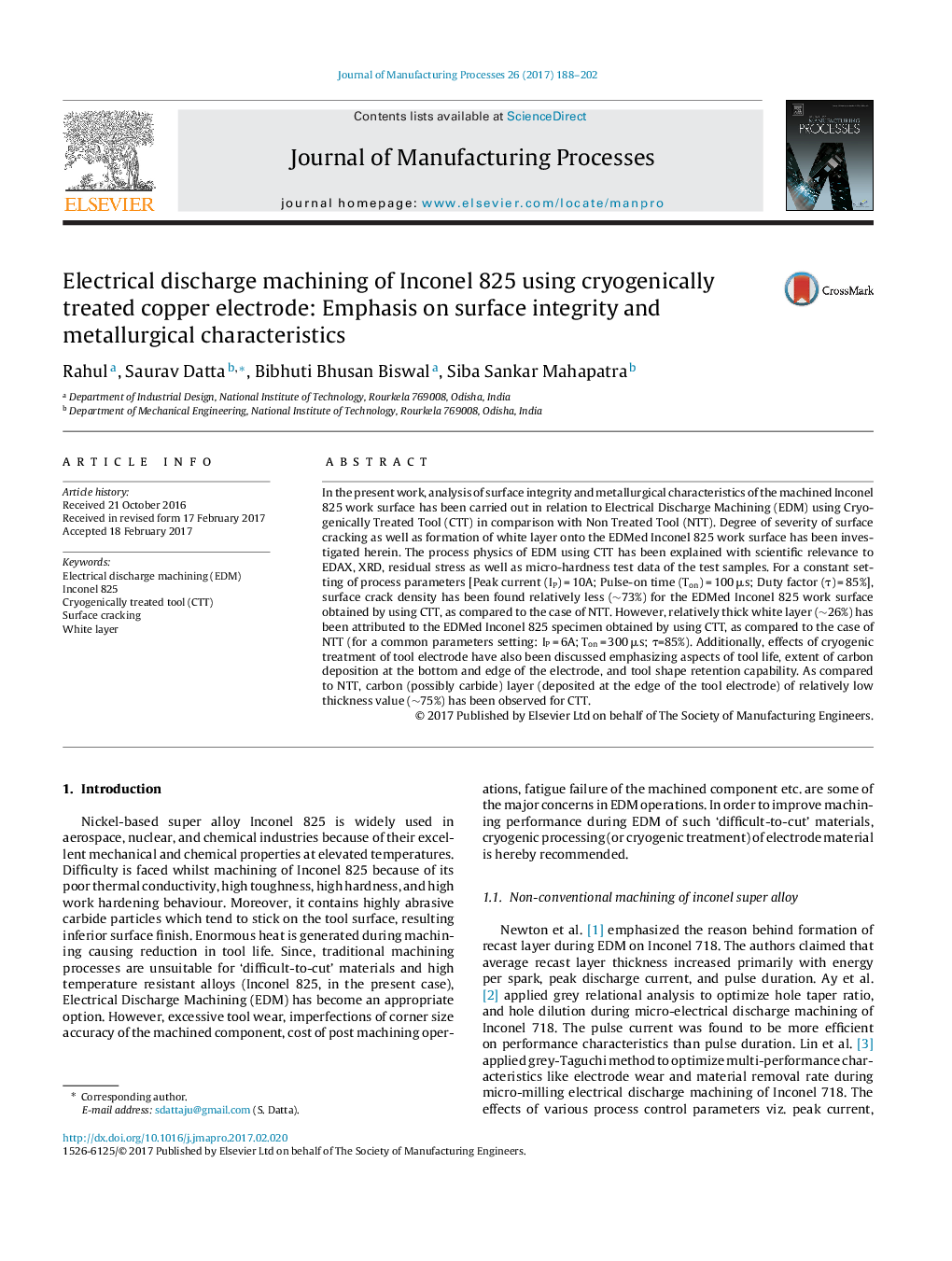| Article ID | Journal | Published Year | Pages | File Type |
|---|---|---|---|---|
| 5469286 | Journal of Manufacturing Processes | 2017 | 15 Pages |
Abstract
In the present work, analysis of surface integrity and metallurgical characteristics of the machined Inconel 825 work surface has been carried out in relation to Electrical Discharge Machining (EDM) using Cryogenically Treated Tool (CTT) in comparison with Non Treated Tool (NTT). Degree of severity of surface cracking as well as formation of white layer onto the EDMed Inconel 825 work surface has been investigated herein. The process physics of EDM using CTT has been explained with scientific relevance to EDAX, XRD, residual stress as well as micro-hardness test data of the test samples. For a constant setting of process parameters [Peak current (IP) = 10A; Pulse-on time (Ton) = 100 μs; Duty factor (Ï) = 85%], surface crack density has been found relatively less (â¼73%) for the EDMed Inconel 825 work surface obtained by using CTT, as compared to the case of NTT. However, relatively thick white layer (â¼26%) has been attributed to the EDMed Inconel 825 specimen obtained by using CTT, as compared to the case of NTT (for a common parameters setting: IP = 6A; Ton = 300 μs; Ï=85%). Additionally, effects of cryogenic treatment of tool electrode have also been discussed emphasizing aspects of tool life, extent of carbon deposition at the bottom and edge of the electrode, and tool shape retention capability. As compared to NTT, carbon (possibly carbide) layer (deposited at the edge of the tool electrode) of relatively low thickness value (â¼75%) has been observed for CTT.
Related Topics
Physical Sciences and Engineering
Engineering
Industrial and Manufacturing Engineering
Authors
Rahul Rahul, Saurav Datta, Bibhuti Bhusan Biswal, Siba Sankar Mahapatra,
